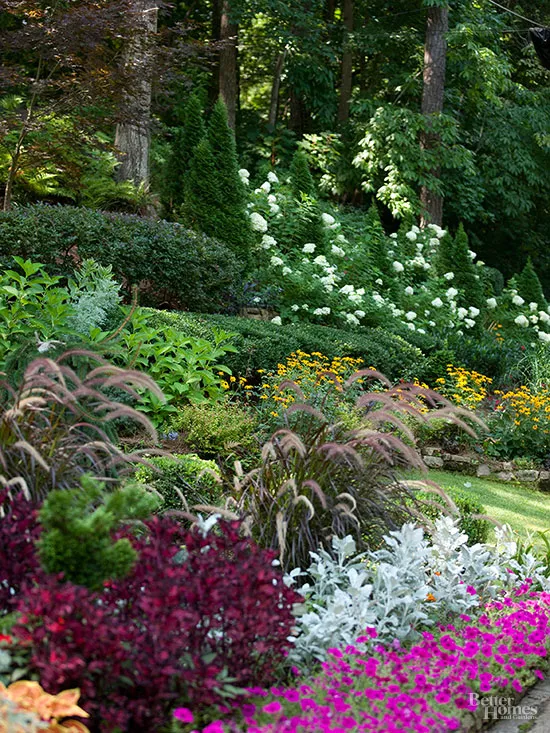The best way to amend soil in an existing garden is by top-dressing the bed with an inch or two of compost each season. The compost will break down, improving the soil structure and fertility. Plus, you'll perk up your perennials. This is particularly helpful if you live in a cold-winter climate and apply the compost as mulch, once the soil freezes in winter. If you don't have access to compost, you could use shredded leaves or well-rotted manure. You also can use a packaged fertilizer, such as 10-10-10 or fish emulsion.
To successfully incorporate fertilizer around existing perennials, do the following:
Check your timing. The best time to apply fertilizer to most plants is early to mid spring, after the plants have grown a few inches above the soil, but before they have so many leaves that it's difficult to work the soil around them. You can fertilize later in the season, but in the north, most perennials should not receive granular chemical fertilizer after about August 1, or 6-8 weeks before frost.
Pull away any mulch.
Add the fertilizer or compost. When using fertilizer, carefully measure the recommended amount. Avoid overdoing it, as too much can be harmful. Sprinkle fertilizer evenly on the ground around the plants. Avoid getting fertilizer on plant leaves or stems, because it can burn them. Lightly work the fertilizer into the soil.
Replace the mulch.
Soak the soil thoroughly. Gently wash off any fertilizer that may have gotten onto the plants.




















